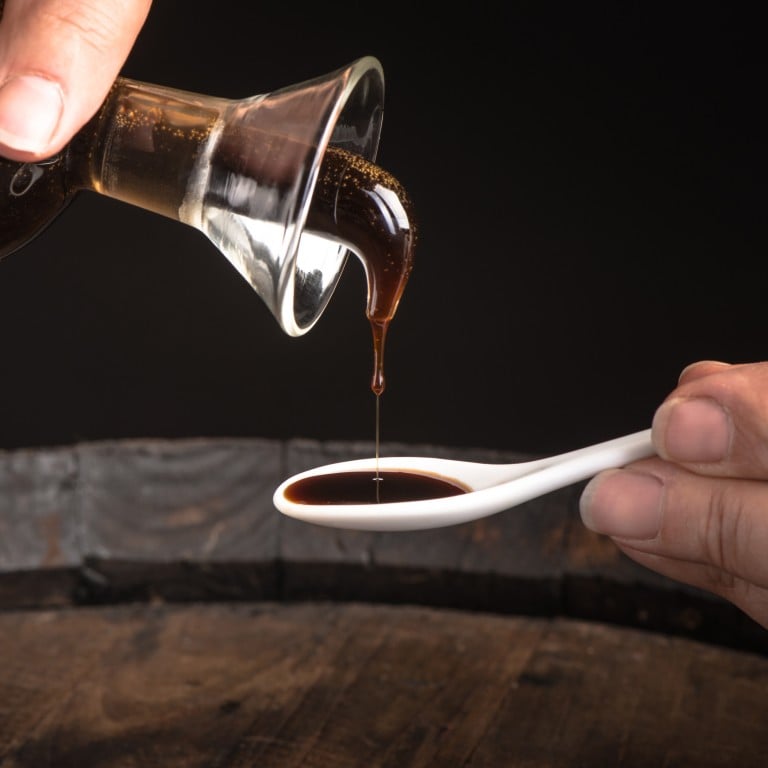
How balsamic vinegar – the best artisanal kind – takes decades to mature like a fine wine, and how to enjoy it
- The best balsamic vinegar is made in Emilio-Romagna, northern Italy, from grape must using a long, complex process
- A visit to an artisanal producer reveals what goes into making the most sought after DOP balsamic vinegar, and a Hong Kong chef suggests ways of eating it
An intense dark brown with hints of red gives way to caramel as syrupy drops of one of the world’s finest balsamic vinegars trickle down the creamy folds of a scoop of vanilla gelato, changing colour as they do so.
This vinegar is the ultimate in slow food – waiting for the aceto balsamico tradizionale DOP to emerge from the bottle is a test of patience. But the precious liquid is the product of centuries of expertise, so the few seconds it takes can’t be begrudged.
Our life-changing dessert, the essence of simplicity, comes at the end of a lunch at Il Borgo del Balsamico, a producer in Italy’s Emilia-Romagna region, source of several ingredients food lovers salivate over.
As with all food products, telling the good balsamic vinegar from the great can be tricky, but the three letters DOP on a bottle, which stand for denominazione di origine protetta – “protected denomination of origin” – guarantee its provenance from this part of north-central Italy.
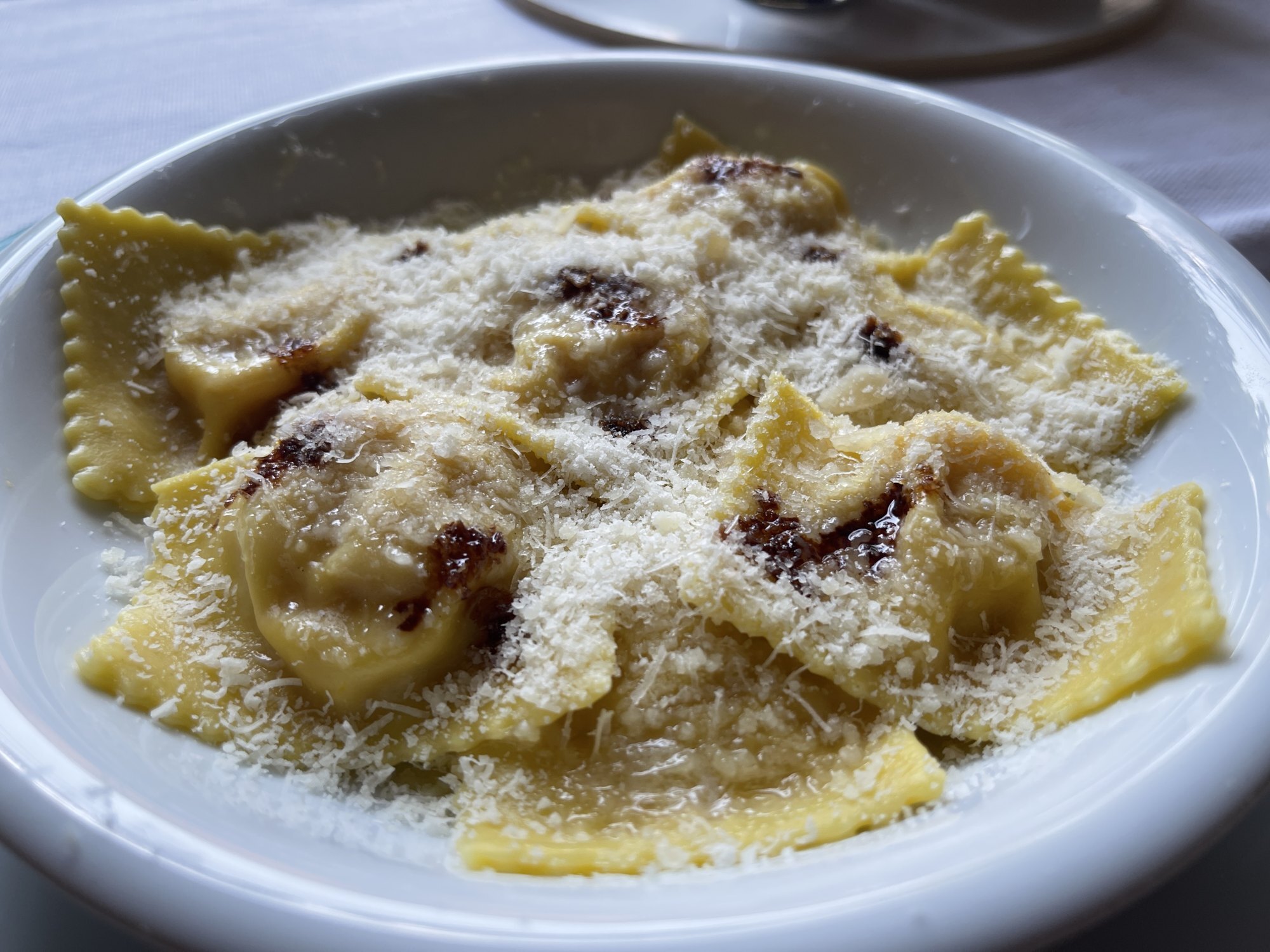
The words aceto balsamico tradizionale confirm that the contents have been crafted using artisanal methods certified by all-powerful consortiums which control the quality of one of Italy’s oldest protected denominations.
The use of the word “balsamic” for vinegar – from the Latin word balsamum, meaning a soothing, aromatic substance – began in the mid-18th century. But balsamic vinegar was in use many centuries before that to treat ailments from coughs to the plague.
Everything you need to know about a Chinese food favourite, hotpot
Over the centuries, wealthy local families started making their own vinegars, ageing them in wooden barrels and offering bottles of vinegar as gifts at marriages and births. The vinegars were passed between generations, with an original batch topped up to create a new one.
My visit to Il Borgo del Balsamico came on a perfect autumnal day, with roses still in bloom past the elegant gates of the terracotta-coloured 18th-century property. It’s not only one of the world’s finest producers of balsamic vinegar, but also an elegant, art-filled place for guests to stay.
Cristina Crotti is the co-owner. Her father bought the estate in the 1960s, when it came complete with an attic containing a batteria – a series of casks made from different woods, in decreasing order of size.
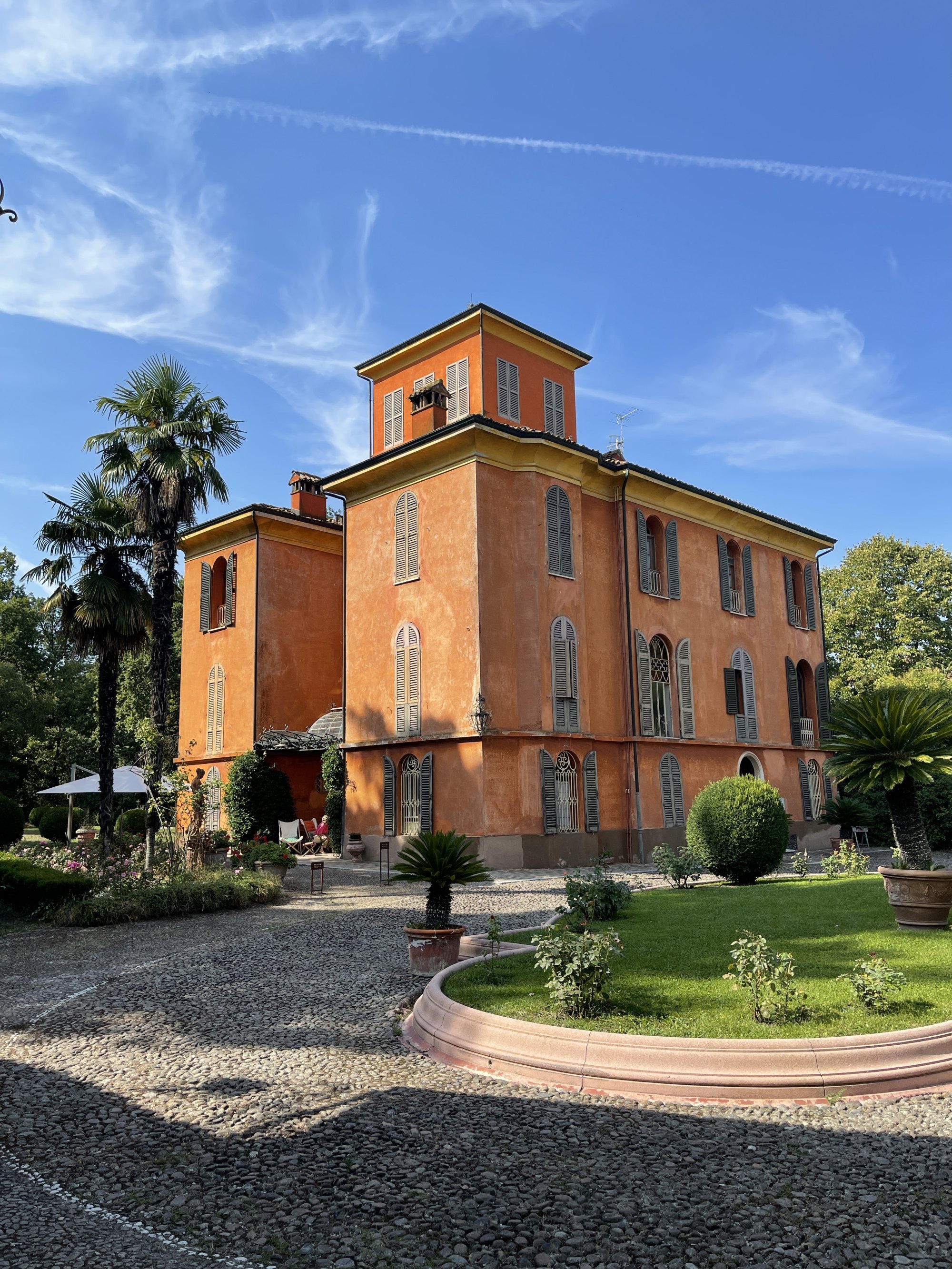
Walking into the room produces sensory overload in the visitor from the beauty of the rows of ancient barrels and the aromas escaping from their gauze-covered openings, which are so full of flavour as to be almost disorienting.
Crotti explains that aceto balsamico tradizionale is made with just one ingredient: grape must that contains the skins, seeds and stems of the fruit, whether black lambrusco or white trebbiano grapes from Reggio Emilia. She adds that the grapes used are “very ordinary”.
“It’s one of the most controlled, certificated products that you can find anywhere in the world, with a production process that is really complex because it follows a method called solera – the same partial blending method used for [dessert wine] Vin Santo and [fortified wine] Marsala, Crotti says.

“We don’t use grapes like a winery, but cook the grape juice in a stainless steel container at 85 degrees Celsius [184 degrees Fahrenheit] for 24 hours so it reduces. After cooking, we wait for two kinds of fermentation, alcoholic and acetic, caused by acetobacter bacteria.”
Although her father’s property came with the balsamic-filled attic, he also wanted to start his own production from scratch, a process which takes a minimum of 12 years.
“You fill the cask to three-quarters and then you wait for the first year. This room is very hot during the summer and very cold during the winter, so the product evaporates during the summer and stays still during the winter. So after the first summer, the product has reduced by more or less 10 per cent.”

Once a year, they bottle the smallest cask and use it to top up the largest cask. This means that no cask is ever emptied; the increasing concentration thickens the product into the syrupy consistency that has to be so patiently coaxed out.
“We never stop the production process,” Crotti says. “You have an incredible bouquet as every single cask is blended differently and made of one of six different woods: oak, juniper, ash, mulberry, chestnut and cherry.
“The DOP designation certifies a minimum of 12 years old, but some barrels here are easily more than 100 years old – but because of the blending, you cannot state that the product itself is 100 years old. But today, we still only bottle around a thousand 100ml bottles of DOP a year.”
The complexity of the ageing process means that experts have to convene to grade the vinegars on aroma, colour and taste, with only around one-third of vinegars achieving the coveted designation.

Those that do are known by various names: a 12-year-old vintage in Reggio Emilia is affinato (refined), a 15- to 20-year-old one is vecchio (old), while extra vecchio can range between 20 and 25 years. In Modena there are two vintages: affinato and extra vecchio.
While the fragrant attic at Il Borgo del Balsamico only holds DOP balsamic, it has another local production facility, and helpfully colour-codes its production according to their suggested uses.
“Yellow for salad, orange for cooking and red for anything from appetiser to dessert,” Crotti explains. “Drop it on lardo di colonnata [cured fat], ice cream, fish, meat, strawberries, Parmesan – it’s so versatile.”
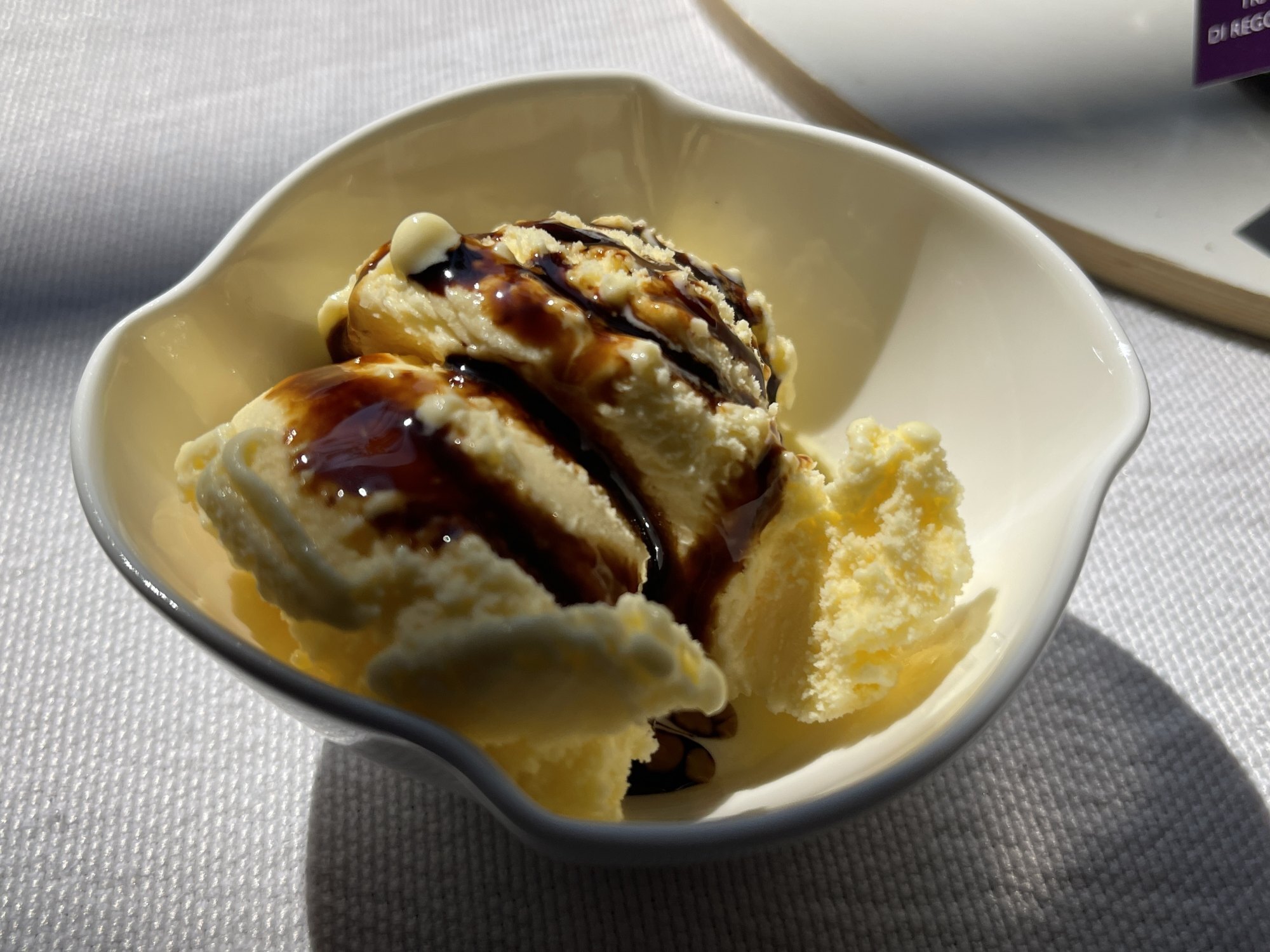
“Modena balsamic vinegar is a work of tradition and patience, due to the natural concentration,” he says. “The result is a silky, smooth, sweet and acidic potion that can enhance the flavour of many ingredients. In Il Borgo del Balsamico I found in particular floral notes, very elegant fluidity and the perfect ratio of sweetness and acidity.”
The 12-year-old orange-seal DOP has shades of wood, prune, licorice, cherry and chestnut, as fine, complex and multifaceted as any great wine. The 15-year-old silver label DOP is elegant, especially dropped slowly over tortellini filled with pumpkin dusted with another local product: Parmigiano Reggiano cheese.
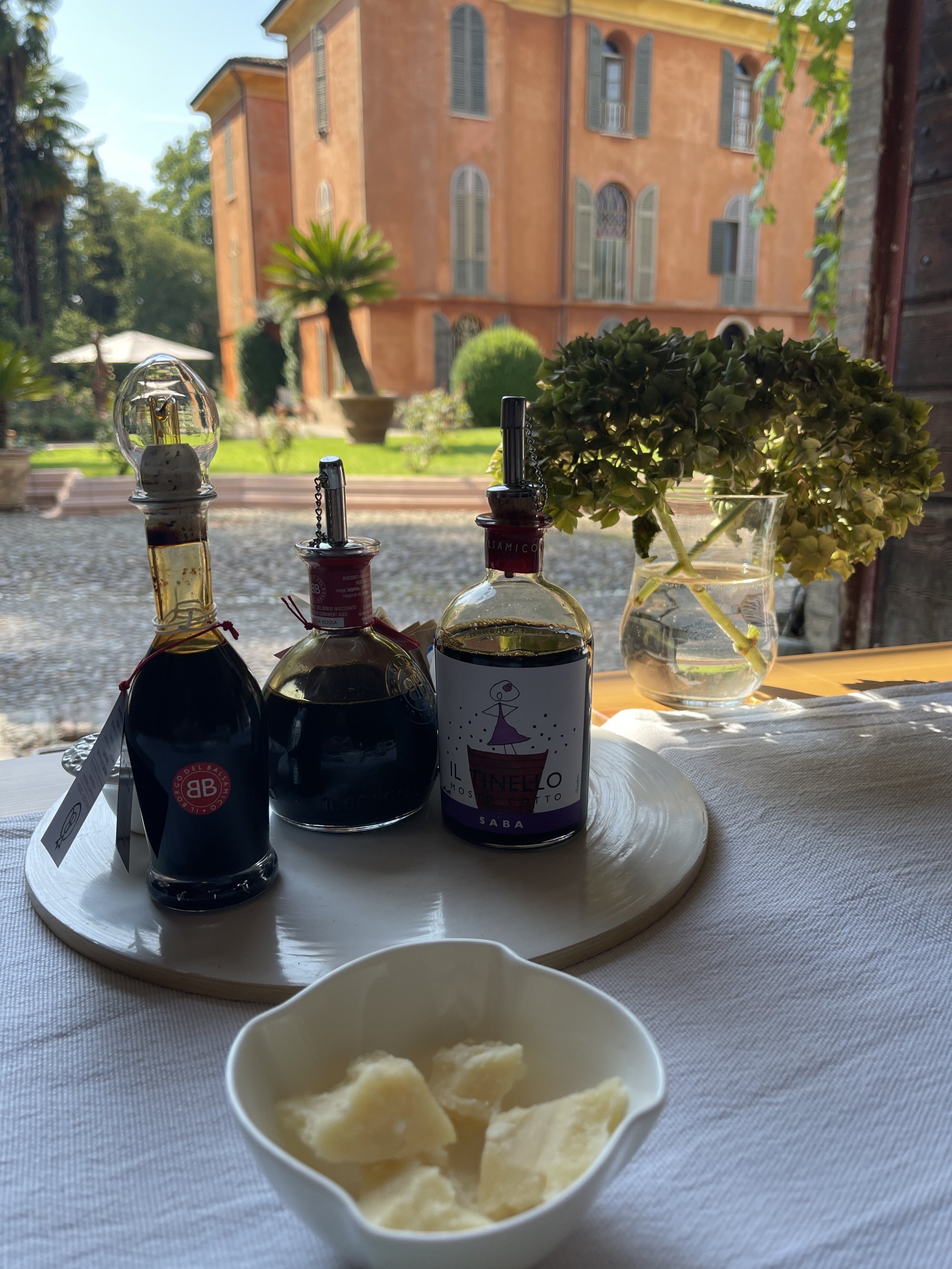
Or, as Cristina Crotti suggests, “Alternatively, just have a small spoonful of it at the end of a meal.”
It’s worth the wait.
Il Borgo del Balsamico is available exclusively in Hong Kong from Certa.

